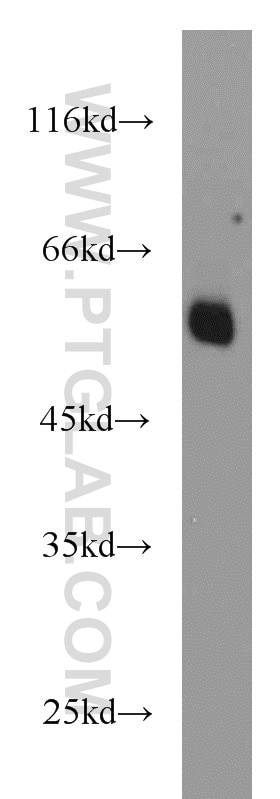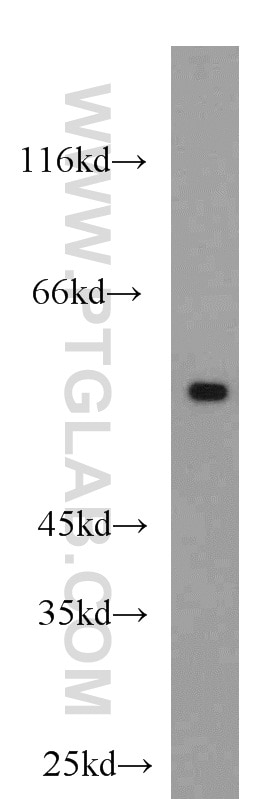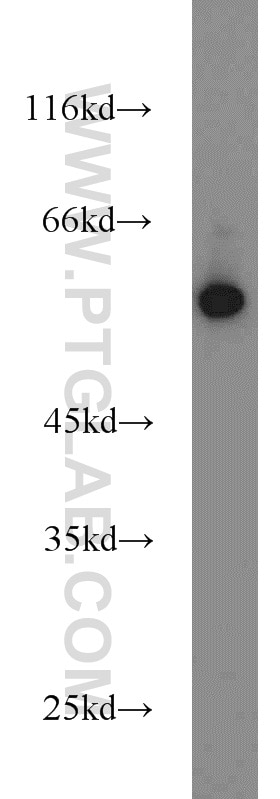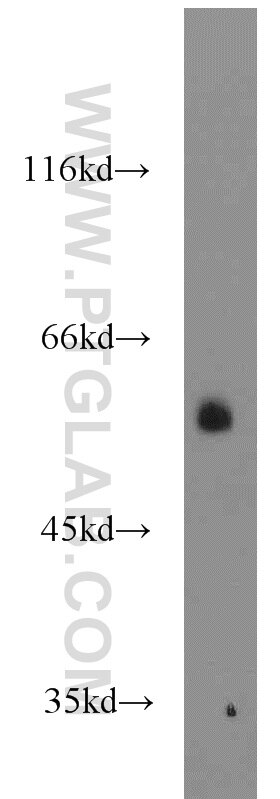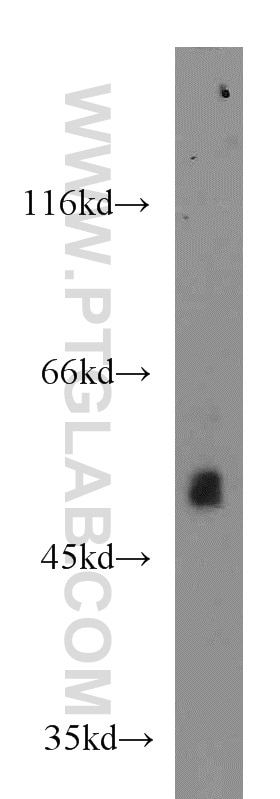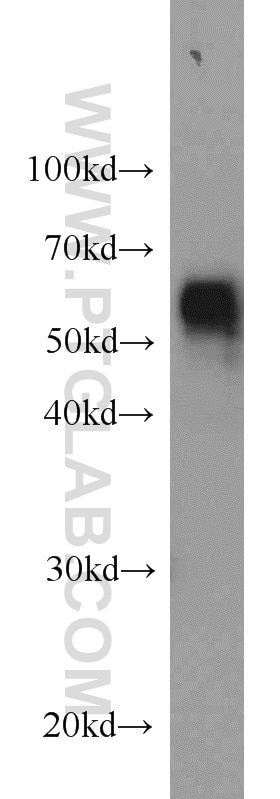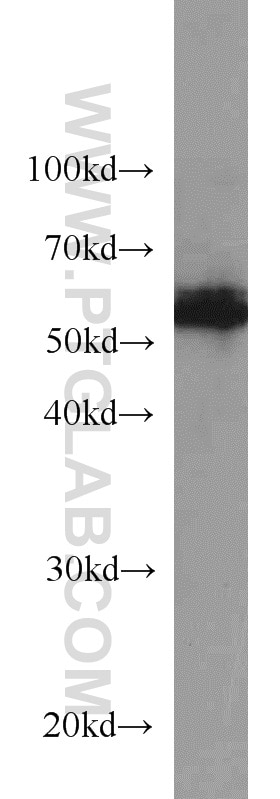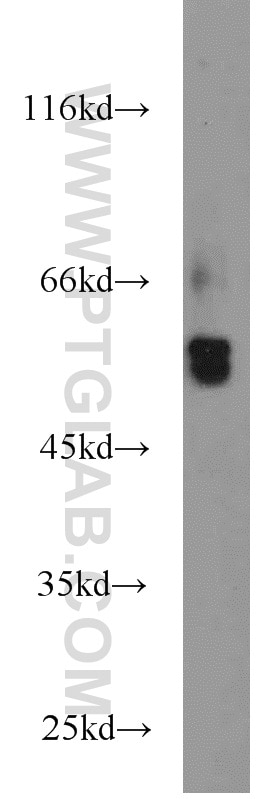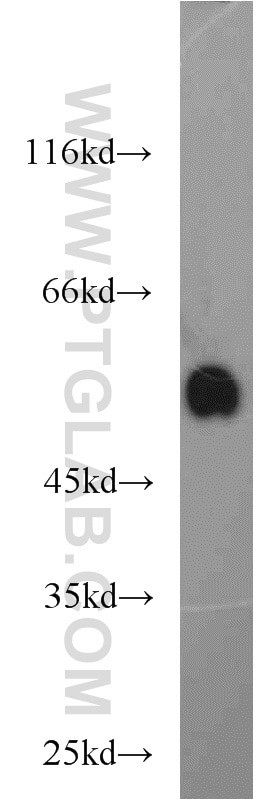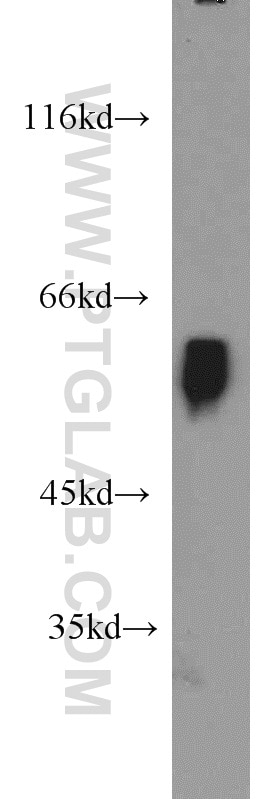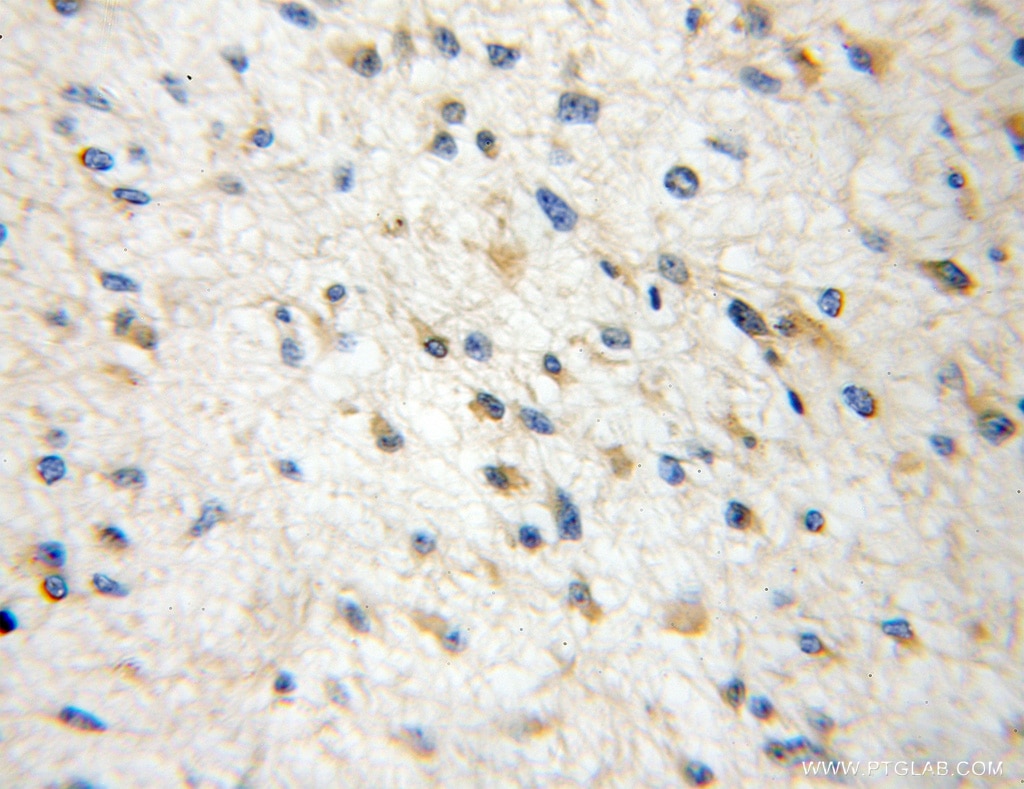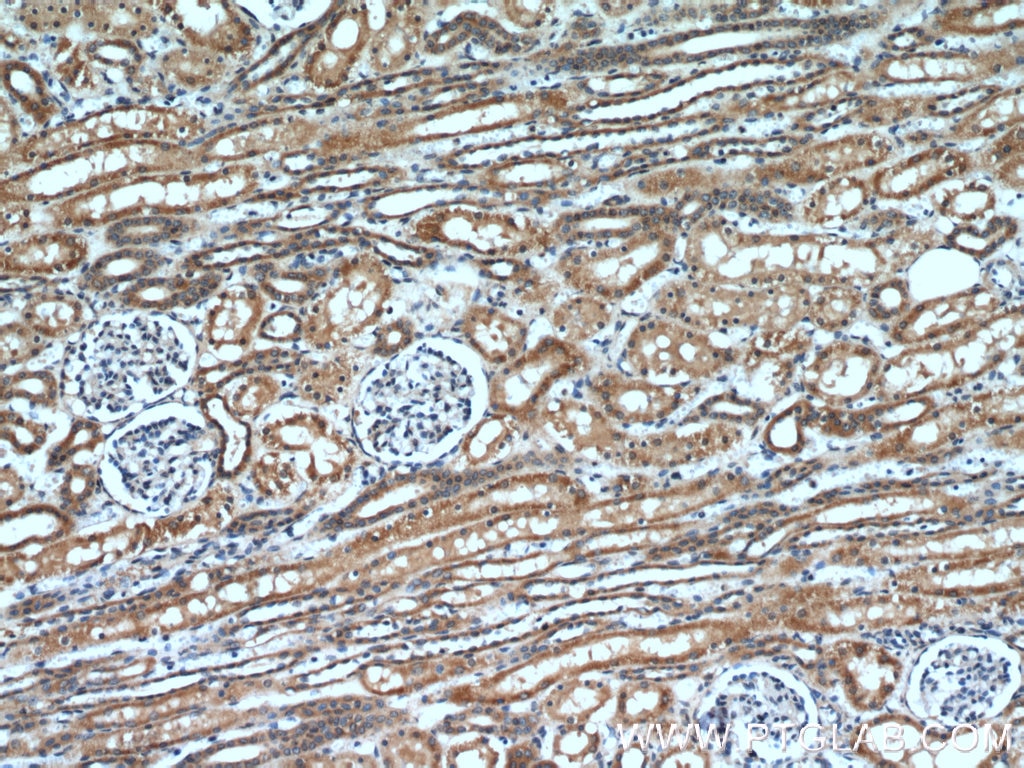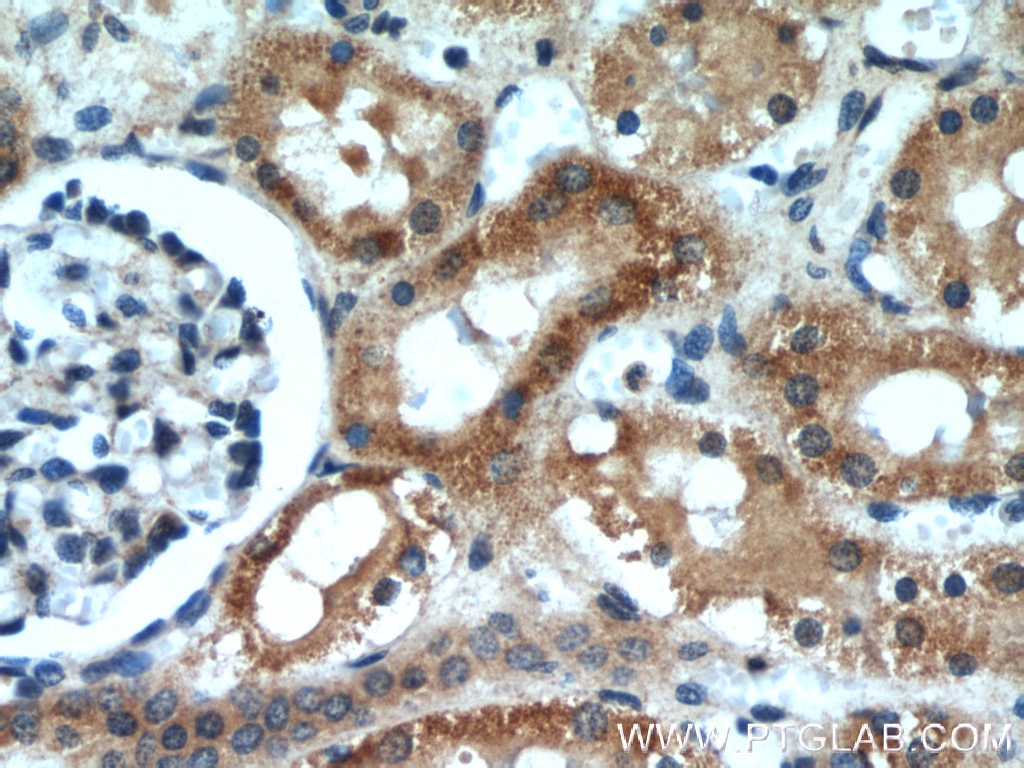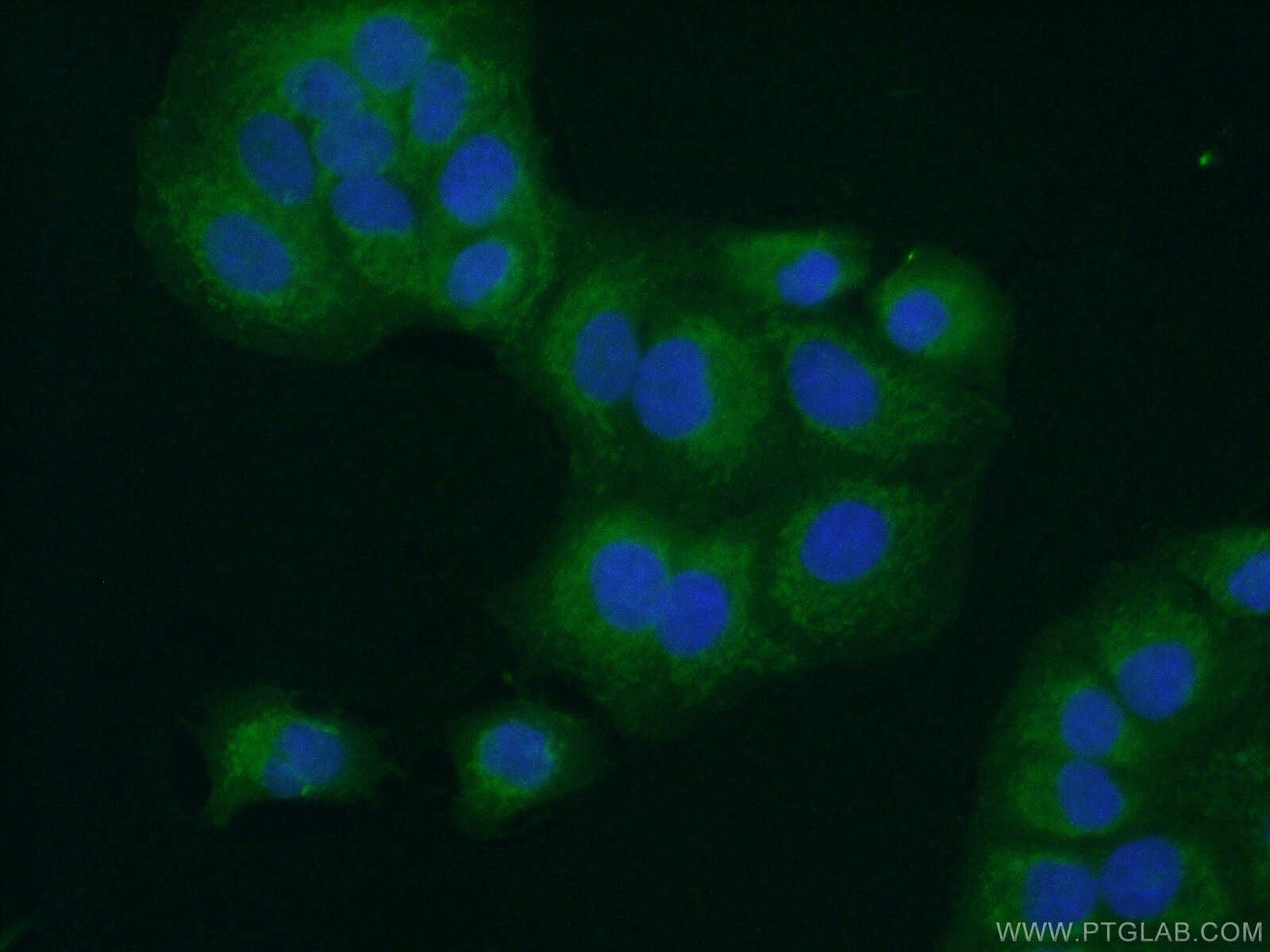Anticorps Polyclonal de lapin anti-BCS1L
BCS1L Polyclonal Antibody for WB, IF, IHC, ELISA
Hôte / Isotype
Lapin / IgG
Réactivité testée
Humain, rat, souris
Applications
WB, IF, IHC, ELISA
Conjugaison
Non conjugué
N° de cat : 10175-2-AP
Synonymes
Galerie de données de validation
Applications testées
| Résultats positifs en WB | cellules A549, cellules HEK-293, cellules HeLa, tissu cérébral humain, tissu de côlon de souris, tissu de muscle squelettique de souris, tissu d'intestin grêle de souris, tissu hépatique de rat, tissu hépatique de souris, tissu rénal de souris |
| Résultats positifs en IHC | tissu de gliome humain, tissu rénal humain il est suggéré de démasquer l'antigène avec un tampon de TE buffer pH 9.0; (*) À défaut, 'le démasquage de l'antigène peut être 'effectué avec un tampon citrate pH 6,0. |
| Résultats positifs en IF/ICC | cellules A549 |
Dilution recommandée
| Application | Dilution |
|---|---|
| Western Blot (WB) | WB : 1:500-1:1000 |
| Immunohistochimie (IHC) | IHC : 1:20-1:200 |
| Immunofluorescence (IF)/ICC | IF/ICC : 1:20-1:200 |
| It is recommended that this reagent should be titrated in each testing system to obtain optimal results. | |
| Sample-dependent, check data in validation data gallery | |
Applications publiées
| WB | See 7 publications below |
Informations sur le produit
10175-2-AP cible BCS1L dans les applications de WB, IF, IHC, ELISA et montre une réactivité avec des échantillons Humain, rat, souris
| Réactivité | Humain, rat, souris |
| Réactivité citée | Humain |
| Hôte / Isotype | Lapin / IgG |
| Clonalité | Polyclonal |
| Type | Anticorps |
| Immunogène | BCS1L Protéine recombinante Ag0231 |
| Nom complet | BCS1-like (yeast) |
| Masse moléculaire calculée | 48 kDa |
| Poids moléculaire observé | 50-55 kDa |
| Numéro d’acquisition GenBank | BC007500 |
| Symbole du gène | BCS1L |
| Identification du gène (NCBI) | 617 |
| Conjugaison | Non conjugué |
| Forme | Liquide |
| Méthode de purification | Purification par affinité contre l'antigène |
| Tampon de stockage | PBS with 0.02% sodium azide and 50% glycerol |
| Conditions de stockage | Stocker à -20°C. Stable pendant un an après l'expédition. L'aliquotage n'est pas nécessaire pour le stockage à -20oC Les 20ul contiennent 0,1% de BSA. |
Informations générales
Human BCS1-like (BCS1L), a mitochondrial inner-membrane protein, is a chaperone necessary for the assembly of mitochondrial respiratory chain complex III. Recently studies indicated that the mutations in this protein may cause the GRACILE (growth retardation, aminoaciduria, cholestasis, iron overload, lactacidosis, and early death) syndrome, a recessively inherited lethal disease characterized by fetal growth retardation, lactic acidosis, aminoaciduria, cholestasis, and abnormalities in iron metabolism.
Protocole
| Product Specific Protocols | |
|---|---|
| WB protocol for BCS1L antibody 10175-2-AP | Download protocol |
| IHC protocol for BCS1L antibody 10175-2-AP | Download protocol |
| IF protocol for BCS1L antibody 10175-2-AP | Download protocol |
| Standard Protocols | |
|---|---|
| Click here to view our Standard Protocols |
Publications
| Species | Application | Title |
|---|---|---|
Sci Transl Med Molecular diagnosis of infantile mitochondrial disease with targeted next-generation sequencing. | ||
Hum Mol Genet Impaired complex III assembly associated with BCS1L gene mutations in isolated mitochondrial encephalopathy. | ||
Hum Mutat Cellular pathophysiological consequences of BCS1L mutations in mitochondrial complex III enzyme deficiency. | ||
Cell Rep Distinct Roles of Mitochondrial HIGD1A and HIGD2A in Respiratory Complex and Supercomplex Biogenesis. | ||
Biochim Biophys Acta LYRM7/MZM1L is a UQCRFS1 chaperone involved in the last steps of mitochondrial Complex III assembly in human cells. |
